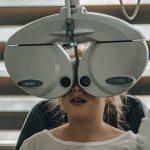Coping with SAD can involve many facets of wellness. Below we’ve listed a few ways that may help you cope with SAD. Keep in mind, you may need to stack methods such as light therapy with eating well and increasing your movement.
Light Therapy
Light therapy is one of the top treatment recommendations for treating SAD. If you’re able to get exposure to natural sunlight every day, this can help, but in Canada,] we have four very real seasons, so lightboxes can be used as a replacement. You can purchase these online and they work when you expose yourself to their bright light approximately 30 to 45 minutes daily. Yes, daily exposure to light is critical for the human body and some people have a much greater physiological need for this. If you struggle with SAD, it’s likely that getting sunlight—or light exposure—every day is simply something your mind and body need for optimal functioning. If you’re considering purchasing a lightbox, make sure to talk to your doctor first since people with eye conditions or those taking certain medications may not be able to use this remedy.
Psychotherapy
Counselling/psychotherapy can also be very beneficial as prevention of symptoms come fall as well as to get you through these months if you’re already struggling with symptoms. For many people, therapy can be as effective as or sometimes even more effective than medications. If you’re covered under our benefits plan, you have access to the therapists at MindBeacon and can get help starting now. You also have access to your EAP.
Medication
Your family doctor can recommend an antidepressant medication to help you during the period of time when you struggle with SAD. Keep in mind that starting your medications before symptoms begin is better than waiting for the symptoms to start. Antidepressants can take anywhere from four to six weeks to take full effect. You may not have to continue taking them once winter is over, so think of this as a temporary aid to get you through the season.
Eat Well
Maintain a healthy diet. This is particularly important when you’re struggling emotionally. While you might crave less healthy food options or comfort foods, eating clean when you’re struggling with SAD symptoms can have a drastic impact on your overall mood and energy level. If you need support with how to improve your eating habits, talk to a registered dietician at FSEAP. This service is available to all members under our benefits plan.
Move for 10 Minutes
Try to get some movement, even if it’s for only 10 minutes a day. A full workout might require far too much energy when you’re struggling with SAD symptoms, but just a quick 10 minutes of elevating your heart rate and engaging your muscles can improve your mood and mindset. The endorphins that are released during and after exercise help you feel happier, more motivated, and hopeful.
Express Your Emotions
Talk to someone about how you feel. If you feel you’re not yet ready to open up, then journal about how you feel. Emotions need some kind of outlet. Without this, your feelings can quickly build up and the consequences can be much more serious. Writing about your emotions may be a simple exercise that can bring you a lot of relief.





